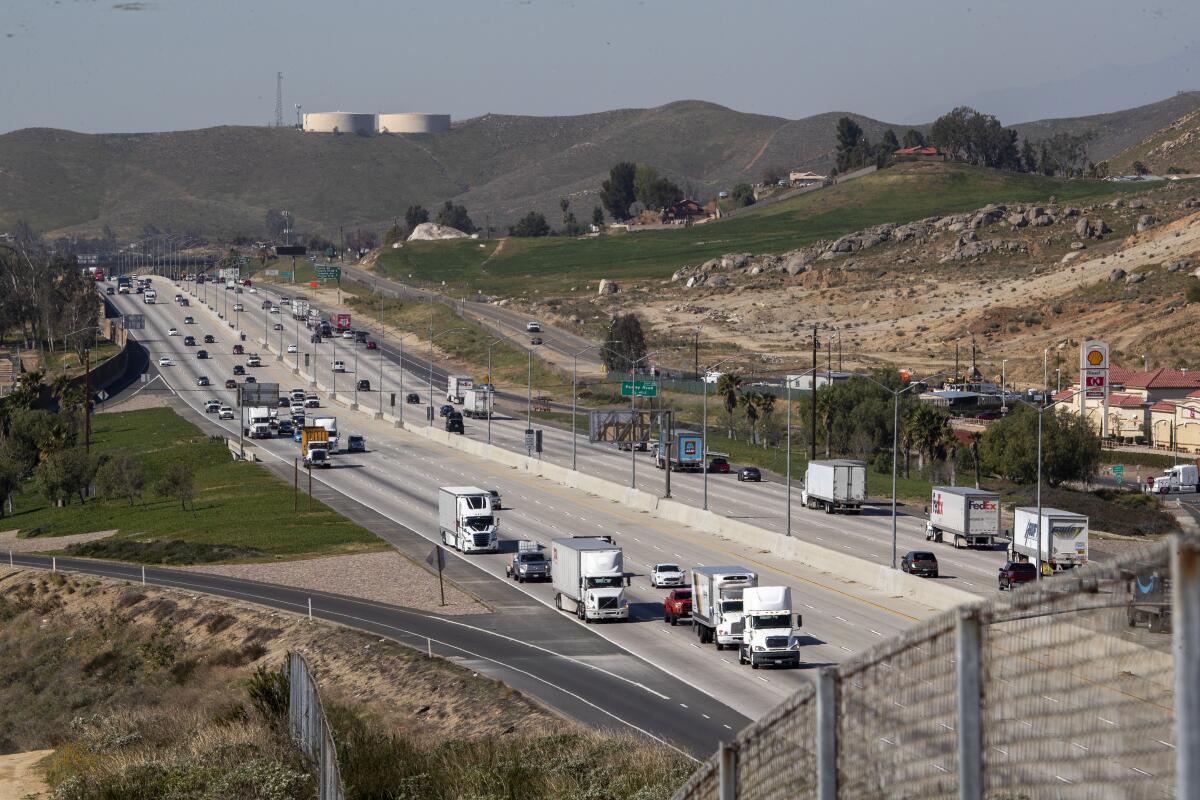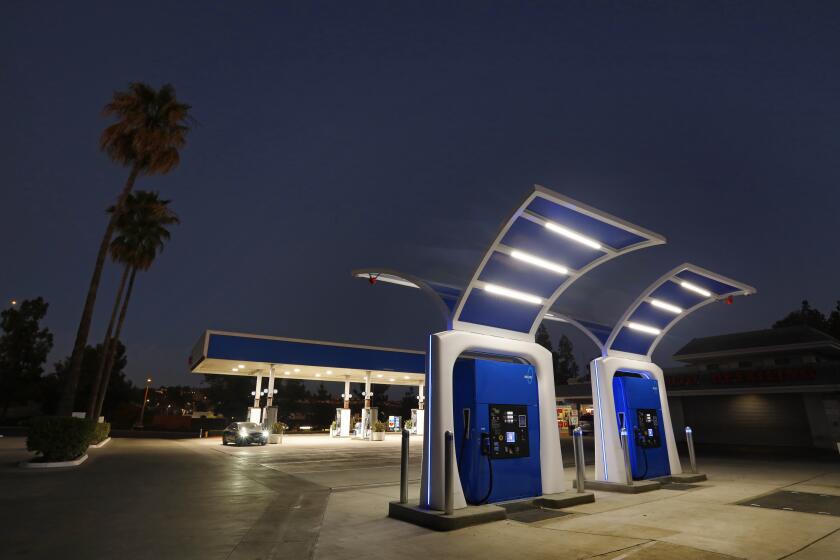Biden is pressed to slash big-rig pollution as next climate target

Now that he’s outlined tough new emissions requirements for carmakers, President Biden is facing pressure to enact similarly stringent rules for big trucks still operating under standards that environmentalists say are too lax.
Climate change activists are urging Biden to match requirements California proposed last year that call for truck companies to cut nitrogen oxide emissions from heavy-duty trucks by roughly 75% below current standards beginning in 2024 and 90% in 2027.
Biden has pledged a Clean Trucks Plan to encourage technological development and impose regulations to reduce the sector’s greenhouse gas emissions, but the rules aren’t expected to be finalized until 2022.
Heavy-duty trucks make up 10% of the vehicles on the road but are responsible for 30% of carbon dioxide emissions and higher percentages of other pollutants, according to the Sierra Club.
“We need federal standards to protect communities across the nation; setting standards with aggressive targets would deliver vital health benefits for those living near warehouses, highways and ports,” said Katherine García, acting director of Sierra Club’s Clean Transportation for All campaign.
Environmentalists are urging Biden to make truck emissions a priority after he stood on the South Lawn of the White House this month, surrounded by electric and hybrid cars made by American manufacturers, and said he was imposing tough new regulations for carmakers. His plan requires them to produce fuel-efficient fleets of cars, SUVs and pickup trucks that average 52 miles per gallon by 2026. He also announced a target that half of all vehicles sold in the U.S. would be capable of emissions-free driving by the end of the decade.
California expected its network of hydrogen car fueling stations to extend coast to coast. But it’s struggling and the rest of the nation is taking a pass. Why?
At the White House event, Biden framed both the new car rules and his forthcoming effort to crack down on truck emissions as a crucial part of his climate agenda.
“It’s about leveraging once-in-a-generation investments and a whole-of-government effort to lift up American autoworkers and strengthen” American leadership on clean car and truck technology, he said.
But the government is playing catch-up on regulating truck emissions. That’s due, in part, to the different nature of big rigs that haul tons of freight and have their own regulatory yardsticks.
Additionally, Congress has authorized the regulation of car pollution since the 1970s, but the first standards for greenhouse gas emissions from trucks were issued in 2014 and the first two years were voluntary.
The Obama administration issued the first truck-emission regulations that went into effect in 2014, when big trucks got about six mpg. The regulations called for a 9% to 23% reduction in emissions and fuel consumption for trucks weighing 8,501 pounds or more, based on weight class, cab type and roof height for each year from 2014 to 2018. A second phase of the Obama-era standards covered the model years 2021 to 2027, with the years between 2018 and 2020 being voluntary.
“It’s critical to continue to reduce pollutants from these big trucks and commercial trucks that are crisscrossing the roads, often in very close proximity to communities,” said Simon Mui, deputy director for clean vehicles and fuels at the Natural Resources Defense Council. “The sector is too big to ignore.”
Truckers have a vested interest in keeping fuel consumption low “since every gallon of fuel saved reduces the cost of moving freight and the price of consumer goods,” said Glen Kedzie, vice president and energy and environmental counsel for the American Trucking Assns., which lobbies for major truck companies.
“Our industry moves nearly 12 billion tons of freight annually — we are not recreational drivers and our carriers have a vested interest in fuel efficiency because fuel is our industry’s second-largest expense after labor,” Kedzie said.
Former President Trump’s fuel economy requirements, finalized in 2020, applied only to passenger cars and light-duty pickup trucks. That same year, the Environmental Protection Agency also began taking steps to tighten limits on heavy-duty truck engines, with a formal solicitation for comments and a plan to finalize new requirements in July 2021. However, the EPA didn’t issue a proposal before Trump left office.
Now Biden says he will issue a pair of major regulations over the next three years as part of his Clean Trucks Plan.
The first will be finalized in 2022 for model year 2027 trucks. A second one will seek even steeper reductions for model year 2030.
“These new rules will be major steps towards improving air quality and addressing the climate crisis,” the EPA said in a fact sheet detailing the plan.
Bloomberg writer Jennifer A. Dlouhy contributed to this report.







